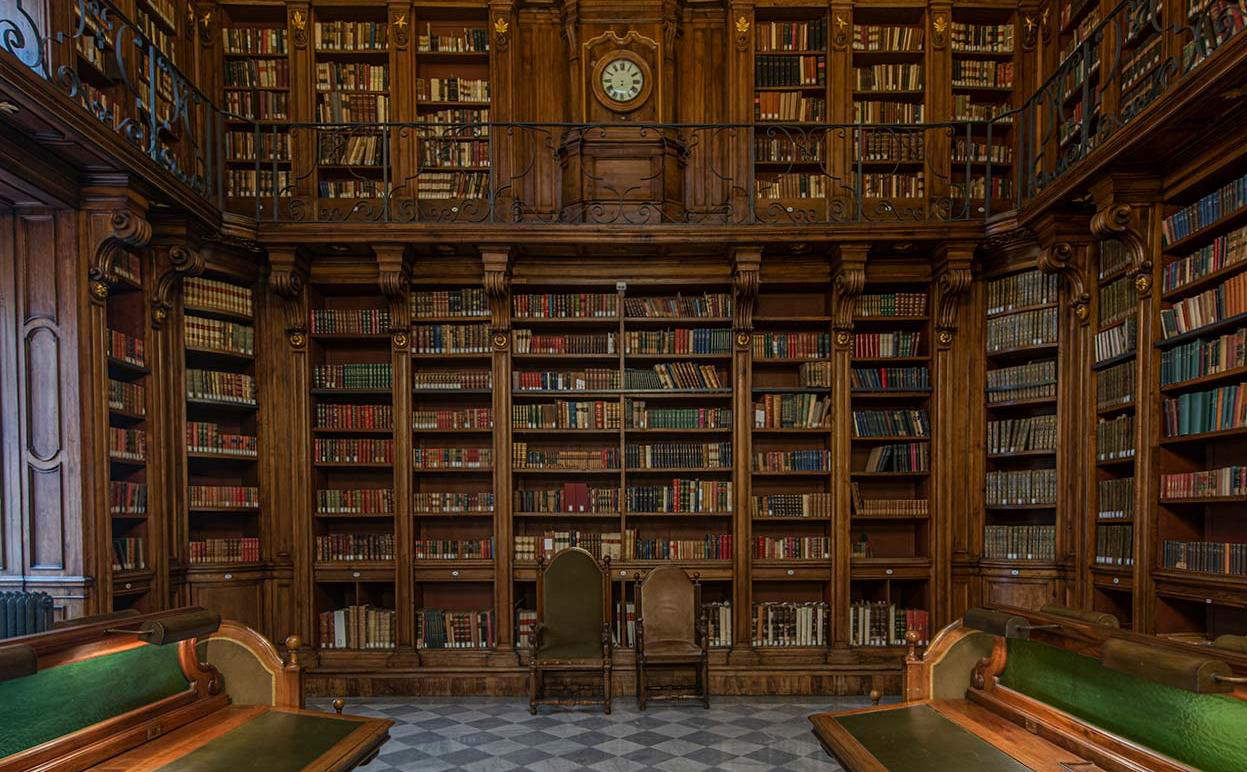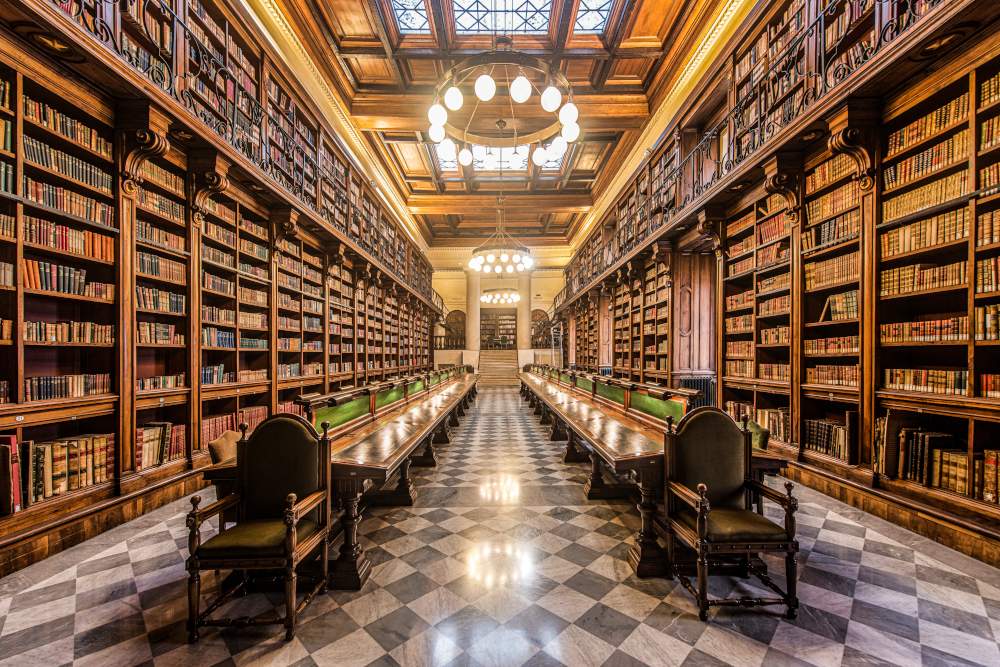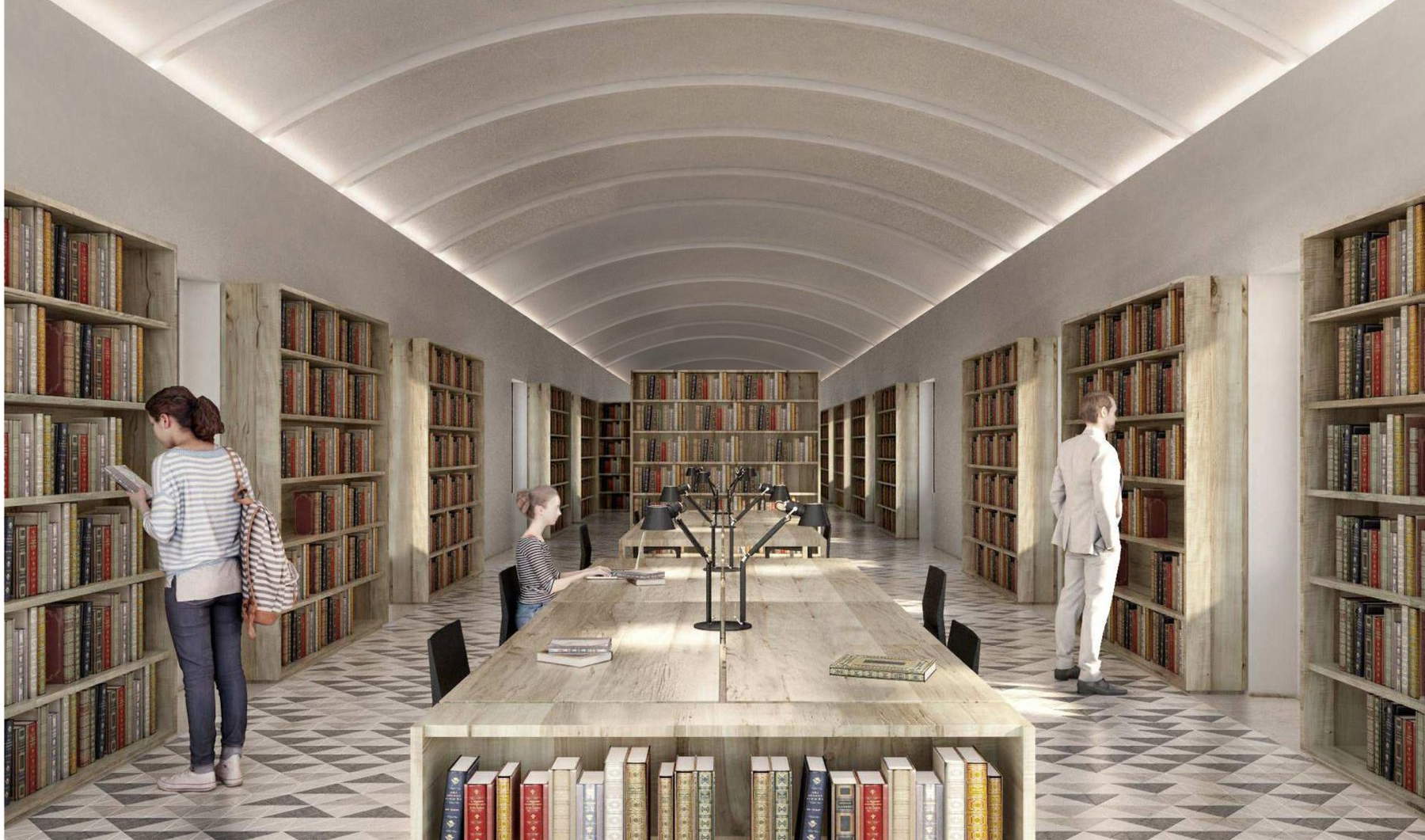“This is a auspicious date that we will remember. A special history that for the first time is preparing to reopen to the public with the precise role of a cultural center,” said Minister Alessandro Giuli on June 12 as he inaugurated Palazzo San Felice, Quirinale, the new home of the Italian Library of Archaeology and History of Art (Biasa). That day actually marked the inauguration of Cultura in cantiere, an immersive itinerary that chronicles the evolution of the Palace’s design through digital installations, multimedia content and interactive spaces, which can be visited free of charge on weekends.
A way, in short, to enshrine, with an exhibition and institutional interventions, the future of the project, after the construction site itself had already been inaugurated in 2023. But the future of what project? On the goodness of the project of the renovation and enhancement of Palazzo San Felice as a cultural center, curated by Mario Botta, there are few doubts. But why it is precisely the Italian Library of Archaeology and Art History that has to find space in the new building is unclear. Not least because that space is not there: and technicians and activists, since last Thursday, are beginning to raise more doubts.


The relocation of Biasa from Palazzo Venezia (where it is currently located, and where it was conceived) to Palazzo San Felice was an idea of then-Minister Dario Franceschini in 2017, sanctioned by a protocol with the Quirinale on December 18, 2017. It states that Palazzo San Felice “will be open to the public by December 31, 2020, and will be managed by an entirely public foundation established by MiBACT. For the recovery, restoration and fitting out project, the Ministry has already allocated 20 million euros and will carry out the work in collaboration with the Agenzia del Demanio.” Work began in 2021 (taken care of by the State Property Agency), the foundation in question does not yet have a budget, an organizational chart, and was without a legal representative until 2021, then again from the end of 2022 to the end of 2024. This foundation does not include theNational Institute of Archaeology and History of Art, which has been in Palazzo Venezia, like the library, since 1922 and owns the library in question (but gave it on free loan to the Ministry a few decades ago to ensure its public use). Its president, archaeologist and former superintendent Adriano La Regina, has on several occasions (most recently a few days ago) explained his opposition to the transfer. On the other hand, the transfer is supported by ViVe, the autonomous institute of the ministry (Vittoriano and Palazzo Venezia) that currently manages the Library.
In short, until a few months ago, the “Biasa at San Felice” project might have seemed like one of the many cultural-themed ideas of politics that later do not come to fruition (such as the project to create temporary shelters for works of art inside nuclear power plants, the reconstruction of theColosseum arena, the national library of the unpublished), but instead the appointment of a new president for the foundation “National Library of Archaeology and Art History,” dated 2025, and then the inauguration on Thursday with the minister and President of the Republic Sergio Mattarella, say they mean business this time. The end of the work and the move are now scheduled for 2027.


The problem is that at Palazzo San Felice, the Biasa (380,000 volumes, including incunabula, cinquecentine and seicentine, more than 1,600 manuscript works and archival funds with more than 100,000 papers, 3,500 periodical titles, 20,700 engravings drawings and photographs, 2,000 theater posters, 66,000 microfiches and 400 CD-ROMs) does not fit. Neither does where it is now, in Palazzo Venezia, fit entirely, as of today: one part is in Via del Collegio Romano, another in a storage room in Ciampino that is very rarely accessed. Because the current Library is not well, this must be said: it has stopped acquisitions for years and would need investment in order to be moved all of it, usable, to the same place. The new Palazzo San Felice was created with a modern, comprehensive cultural hub idea in mind, with offices, storage, technical rooms, exhibition areas, outdoor space for events, reception, bar service and refreshments. Not with the Italian Library of Archaeology and Art History in mind. There is no record of inspections by the architects in charge of the project at the current Biasa to understand the size and footprint of what would have to be moved. But that does not seem to be the point, if privately top ministry officials admitted to Inasa President La Regina that everything cannot be moved to San Felice, since the new building will need space for events.
Moving only a piece of the Biasa to Palazzo San Felice would mean having a Biasa divided into three (as it is now), but for the first time away (physically) from theNational Institute of Archaeology and History of Art, which was founded on the idea of Corrado Ricci and the impetus of Benedetto Croce, in 1918, and to which the library was assigned shortly afterwards. In order to “fill” a new cultural center and free up that part of Palazzo Venezia, which should be allocated to the permanent collection of the palace/museum. Are there really no libraries in all of Rome, and Italy, more suitable for the “cultural hub” with bars and event rooms than Palazzo San Felice? A petition on change.org, written by a user who prefers not to talk to us, has already collected 500 signatures.
Warning: the translation into English of the original Italian article was created using automatic tools. We undertake to review all articles, but we do not guarantee the total absence of inaccuracies in the translation due to the program. You can find the original by clicking on the ITA button. If you find any mistake,please contact us.